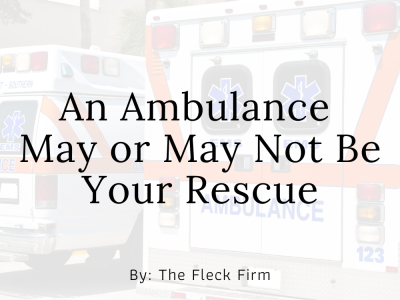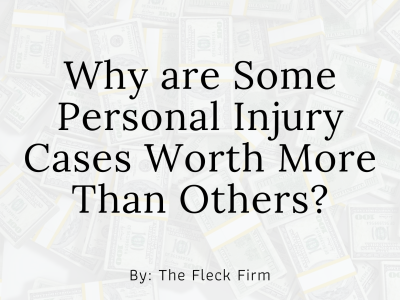An Ambulance May or May Not Be Your Rescue
The sad fact is that some of those in ambulances because of accidents get into another accident while they’re on their way to the hospital. Just like any other vehicle crash, there can be multiple causes, including negligence by the ambulance driver, the other vehicle’s driver, or both.
Tyler Fleck represents those injured in accidents and family members of those killed in them to obtain compensation for their losses from insurance companies or the parties involved. If you’d like to discuss how this might work for you and your family, please call him at (270) 446-7000.
Ambulance Accidents by the Numbers
In 2023, the National Highway Transportation Safety Administration (NHTSA) published statistics on nationwide ambulance accidents that occurred from 2012 to 2018. The agency found:
- Fatal crashes were relatively rare, with an average of 24.7 fatal crashes and 28.4 fatalities annually. There were 173 fatal crashes causing 199 fatalities during these seven years
- Of those killed, 40.2% were ambulance occupants, 52.3% occupied other vehicles, and 7.5% were pedestrians or bicyclists
- Starting in 2013, data were collected on accidents while ambulances used emergency lights and sirens. Researchers found that from 2013 to 2018, 28% of the fatal crashes happened when lights and sirens were used. About 36.2% of crashes causing injuries occurred when the lights and sirens were active, with 24.4% of those injured being inside the ambulance
The report didn’t have good news for ambulance drivers. Between 2012 and 2018, nearly all crashes (92.6%) involved ambulance driver error. The biggest cited problems were:
- Improper clearing of intersections
- Traveling against red lights
- Operator fatigue
The NHTSA conducted in-depth investigations into 200 ambulance accidents during this timeframe. They found the ambulance driver partially or fully at fault 51.8% of the time. Researchers also found that 74% of those driving the other vehicles involved in ambulance accidents committed errors.
Other common mistakes committed by ambulance drivers were speeding (14.8%), and an equal number (3.7%) were:
- Impaired by alcohol or drugs
- Limited by a medical condition
- Distracted
Lights and sirens were on in 40.7% of crashes. Expert reviewers found that they were often misused in situations where best-practice guidelines state they should have been off.
A big problem was that ambulance occupants (even those being transported) weren’t properly restrained while in the ambulance:
- Only 8.8% of EMTs and paramedics in the patient compartment were adequately restrained
- 14.8% of ambulance drivers weren’t using seat belts at the time of the crash. That’s a higher share than the overall, national average for those not using them at 10.3% as of 2017, according to NHTSA
- Only 17.4% of patients were restrained correctly by shoulder harnesses and lateral belts
The vast majority of EMTs are professional, and nearly all ambulance trips end as planned. But that’s not the case all the time.
Other attorneys take contingent fees of 33% to 50% of your settlement.
We want you to keep more of your money.
Our contingent fee is only 30% on cases settled prior to filing suit.
Researches Make the Plaintiff’s Attorney’s Job Easier
Negligence is the legal basis of nearly all personal injury claims and lawsuits. Generally, it applies when mistakes happened when they should not have, and someone who should’ve gotten the benefit of the party’s attention ended up injured or killed. One factor in negligence cases is whether the party knew of a potentially dangerous problem but failed to act to prevent or better control it.
The end of the report states:
“Overall, the issues identified by this study are not new and some countermeasures already exist to address many of the problems. NHTSA and others have long recommended that all operators complete an emergency vehicle operator course that is specific to ambulances (NHTSA, 1995; Thomas et al., 2019). Guides exist on when to use lights and sirens and how to implement a quality fatigue management program for ambulance operators and clinicians (Boone et al., 2013). Ambulance patient care compartment standards have been redesigned to make it easier for clinicians to remain safely restrained while treating patients but many older ambulances without these updates remain in service. Once new vehicle safety designs or technologies are adopted, clinicians will need training on how to properly use the new designs. All these countermeasures, however, require a commitment at the organizational level to implement good policies and continuous monitoring of operators and clinicians to ensure best practices are always followed. If organizations, operators, and clinicians all buy-in to creating a culture of safety, the entire EMS system and the patients served will benefit from all-around safer operations on the roadways.”
The study authors are telling emergency services organizations that they know what the problems are and what they should do about them. If they don’t do the right things, that’s on them. If an organization isn’t taking safety seriously and someone is injured or killed, plaintiff attorneys like me are the ones who hold them accountable.
What Comes Next?
If you’re injured or a loved one is killed while in an ambulance, in another vehicle struck by one, or involved in the crash as a pedestrian or bicyclist, get help from an experienced attorney. Call The Fleck Firm to schedule a free consultation at (270) 446-7000 today.
We can discuss the accident, the injuries, Kentucky law, and what you should do next. You will be fully informed about your rights, the challenges ahead, and the strengths of your case. Insurance companies have lawyers. You should have one, too.








